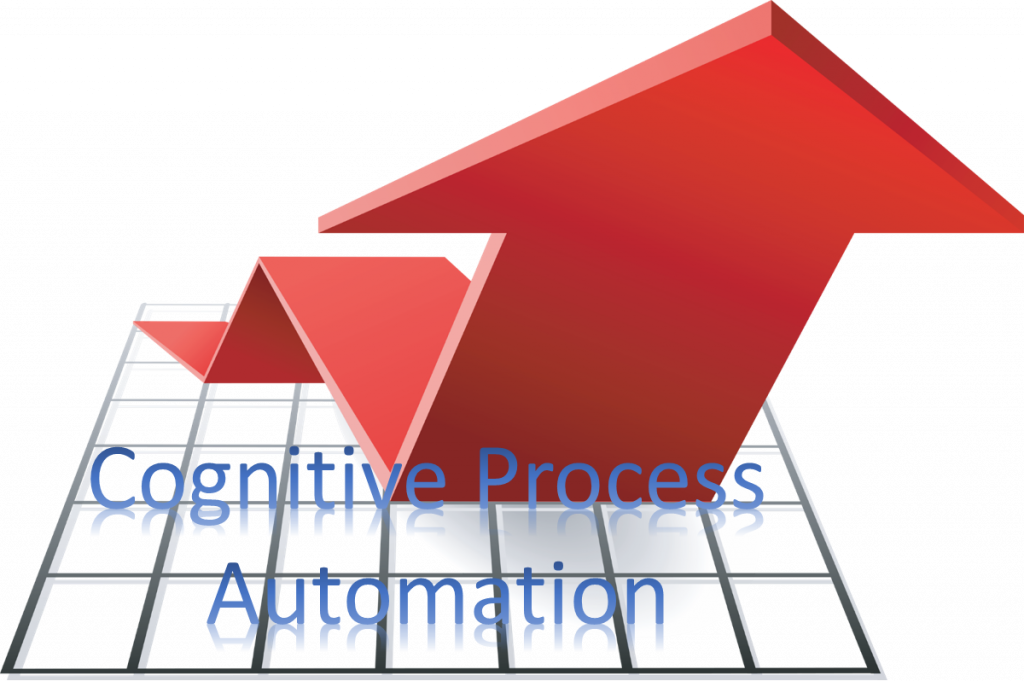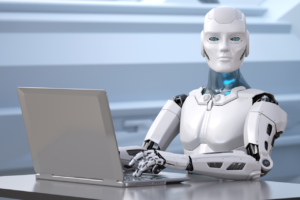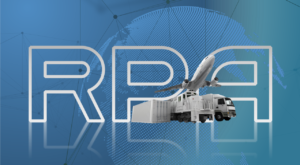From time immemorial, business owners have looked to technology to help them become more efficient and profitable. As a result, workers have maintained a love/hate relationship with technology. New technologies make accomplishing work easier (and workers love that); but, new technologies also make some workers redundant (and they hate that). Process automation is no different. One of the latest technologies receiving a lot of press coverage is robotic process automation (RPA). RPA automates what has been called “swivel chair” work. Allan Surtees, head of IT at Gazprom Energy, explains, “‘Swivel chair’ work [involves] clicking on multiple systems, getting data from one source and putting it into another, where people are actually stuck four or five hours a day just doing this boring, manual nonsense.”[1] The work itself is not nonsense, it’s important; but, it is tedious. Tedious work inevitably results in errors needing to be corrected — requiring the expenditure of both time and money. Dianna Labrien (@DiLabrien) observes, “With the emergence of Robotic Process Automation, all this can be transformed. Now there are software robots to help with these laborious routines.”[2] She goes on to describe four ways RPA can help businesses thrive in the Digital Age.
Benefits of RPA
1. Reduced Costs. Labrien associates reduced costs almost exclusively with employee reductions. She explains, “When repetitive clerical/service functions are performed by humans (e.g., call centers, data entry, data transfer, etc.), there is the cost of recruiting, hiring and training employees. Add to that the salaries and benefits, and you have a great deal invested in a single human employee.” Obviously eliminating employees saves money; but, according to Craig Nelson, a partner at ISG, that’s not what’s happening. He explains, “Productivity gains from automation are not resulting in job losses, but are enabling companies to redeploy employees to handle higher-value tasks and a greater volume of work.” Reduced costs are realized because time and money don’t have to be spent correcting human errors.
2. Speed, Productivity, and Accuracy. Eliminating errors is obviously a good thing. Nelson notes, “Almost any business process that interfaces digitally and follows standardized business rules can be easily automated. The fact is, robots are better at following rules-based processes than their human counterparts.” Labrien adds, “Robotic automation software is like the ‘Energizer Bunny’ — it just ‘keeps on keeping on,’ accomplishing more and faster than its human counterpart. The problem of procedural errors becomes a non-issue because the impacts of tedium and boredom do not cause distraction related errors. This is all the more important in cases where there are regulatory conditions involved.”
3. Consistency through Analytics. Big data analytics are playing an increasingly important business role as organizations transform into digital enterprises. Labrien notes, “Automation opens up and increases the availability of data. Robots leave traces in the system and you can always know how many transactions they process, how many exceptions they handle, and so on. Advanced audit brings efficiency to the way work is managed and delivers data consistency, streamlining the entire business logic.” As I will discuss below, when you add cognitive technologies into the mix, process automation analytics can go far beyond mere bean counting.
4. Scalability. Labrien asserts, “As your business grows, or if there are varying seasonal demands, a business is able to scale robotic process automation up or down to fit the demand. This avoids seasonal layoffs or the stressful activity of hiring on temps during ‘heavy’ periods. Effective solutions for scalability are a huge benefit.” Nick Ismail (@ishers123) adds, “As businesses everywhere look for solutions to their shared question of how to increase productivity and efficiency in a secure, scalable way, robotic process automation software has emerged as a leading answer. The digital workforce that RPA creates enables long-term agility and compliance for strict security standards and increases capacity without increasing headcount — all while helping human workers prioritize their workloads and shift the mundane, robot-like work off their desks so they can focus on adding real value to the business.”[4]
Beyond RPA
As I noted above, when RPA is complemented by cognitive technologies, you get what I call Cognitive Process Automation™ (CPA). Cognitive Process Automation goes beyond the accomplishment of routine tasks. CPA has the potential to not just automate, but to improve processes by dynamically processing and executing subtle decisions as if they were made by the best human expert. Journalists at Read IT Quik (RIQ) add, “Robotic process automation and artificial intelligence (AI) are areas that are making great progress in business. From automating transactional work to conversing with the customer to enable data-backed decision making, they are making work life easier. One such area of application for robots that appears to benefit professionals is that of decision testing. According to the latest research conducted by the Human Nature Lab at Yale, software bots that behave randomly have the potential to test the decision-making skills of humans. This can change the very nature of decision-making in the modern enterprise, for the better.”[5]
Harvey Spencer (@HSAssocs), President of Harvey Spencer Associates, predicts cognitive capture will make CPA even more valuable. He explains, “Capture and RPA are synergistic. RPA automates keystrokes and tasks. Cognitive capture extracts data and interprets it to facilitate automating business processes. … Cognitive capture is the enabler that will cause the RPA industry to grow rapidly as it broadens its capability to better understand the data and images accessed.”[6] By complementing process automation with cognitive technologies, a whole new world of possibilities opens for visionary enterprises.
Summary
Nelson concludes, “To take full advantage of what RPA has to offer, business leaders must begin shifting their thinking to understand how the digital company aligns to the digital economy.” Cognitive technologies can help with this effort. RIQ journalists add, “The fact remains that as automation becomes mainstream, man and machine will become co-workers in the enterprise of tomorrow. We will be subject to group decision-making time and again, along with bots, and randomness can be effectively used to help take better decisions and evolve over time.” Saugata Ghosh, a senior manager of digital services at Capgemini, agrees machines and humans are destined to work more closely together. “Initially,” he notes, “everybody was after headcount reduction. Most people are telling us now that their focus is on reducing errors, improving compliance, or improving the customer experience. We’re certainly seeing maturity in this area and the focus has shifted from the tactical to more strategic and sustainable objectives.”[7] Finally, Ismail observes, “Automation technology has the power to completely transform businesses, from the way the smallest, most mundane tasks are performed to the way an organization thinks of work in the first place — but only if that automation technology is properly integrated and managed. The true secret to a successful digital workforce is the successful collaboration and organization on the part of the humans in charge.”
Footnotes
[1] Linda Tucci, “Robotic process automation software: Find the right target,” TechTarget, 31 July 2016.
[2] Dianna Labrien, “4 Ways Robotic Process Automation Will Help Your Business,” Tech.co, 19 February 2016.
[3] Craig Nelson, “Rethink How Humans and Machines Will Work Together,” InformationWeek, 13 June 2017.
[4] Nick Ismail, “The secret behind scaling robotic process automation across the enterprise,” Information Age, 3 October 2017.
[5] Staff, “How Robots Can Aid Problem-solving,” Read IT Quik, 19 June 2017.
[6] Harvey Spencer, “RPA meets cognitive capture,” KMWorld, 8 March 2018.
[7] Peter Gutierrez, “Making AI and robotics work for your business,” IoT Hub, 12 October 2016.





